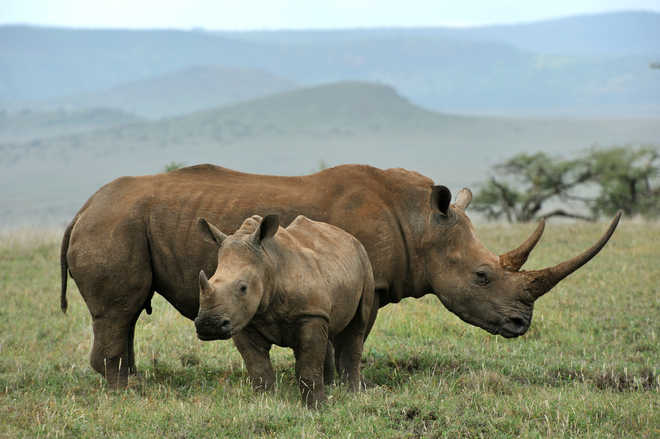Oliver Poole
When it comes to rhinos — and elephants — it’s usually bad news. Rampant poaching across Africa and Asia has wiped out national populations, driven several subspecies to extinction and fuelled the operations of international criminal cartels. In the face of this, however, one conservancy in Kenya has managed to grow its population of endangered black rhinos by 100 per cent in just 10 years. Using this as leverage for eco-tourism, the approach has brought community and conservation together by implementing sustainable agriculture, and creating health and education programmes.
Their success has lead to a dilemma few at Ol Pejeta Conservancy ever dreamt of — they are fast approaching the maximum number of black rhinos that the 90,000-acre conservancy can sustain. This is a challenge that is catalysing new partnerships, and presenting a window to a future for wildlife conservation across Africa.
Ol Pejeta Conservancy is nestled in the foothills of Mt. Kenya, in the wildlife-rich Laikipia County. When it was first established as a rhino sanctuary in 1989, it was home to just four black rhinos. Today, it is the largest black rhino sanctuary in East Africa, and hosts approximately 16 per cent of the national population. Recently, Ol Pejeta was the host to delegates from the Giants Summit in recognition of its incredible contribution to conservation globally. Its elite anti-poaching squad includes a K-9 unit, with attack and scent detection dogs trained to locate ammunition, ivory and rhino horn. The rangers ensure each rhino is visually observed at least once a week.
But it is their arsenal of wildlife monitoring technology that impresses. Infrared camera traps set up along a solar-powered electric fence provide 24/7 surveillance and their more recent deployment of drones is an innovation to conservation that is fast becoming irreplaceable.
While technology is now a big part of the Conservancy’s success, it is also its investment in surrounding communities that has lead to overwhelming local support for wildlife conservation from the people living along the Conservancy’s borders.
Whilst the bulk of revenues are derived from tourism, over the past 10 years Ol Pejeta has proven that an integrated system of wildlife and livestock management not only works, but can actually be beneficial to the grasslands at the same time as helping to maximise land productivity. — The Independent
Unlock Exclusive Insights with The Tribune Premium
Take your experience further with Premium access.
Thought-provoking Opinions, Expert Analysis, In-depth Insights and other Member Only Benefits
Already a Member? Sign In Now











